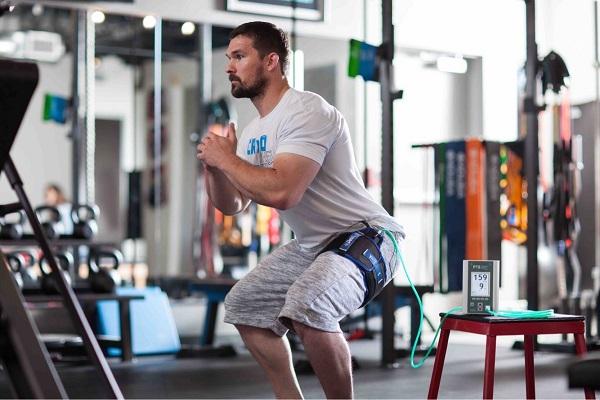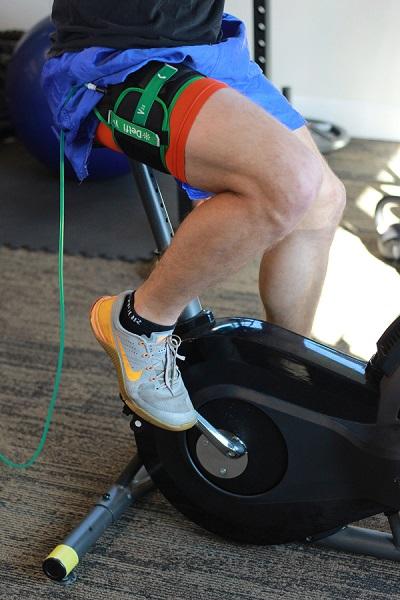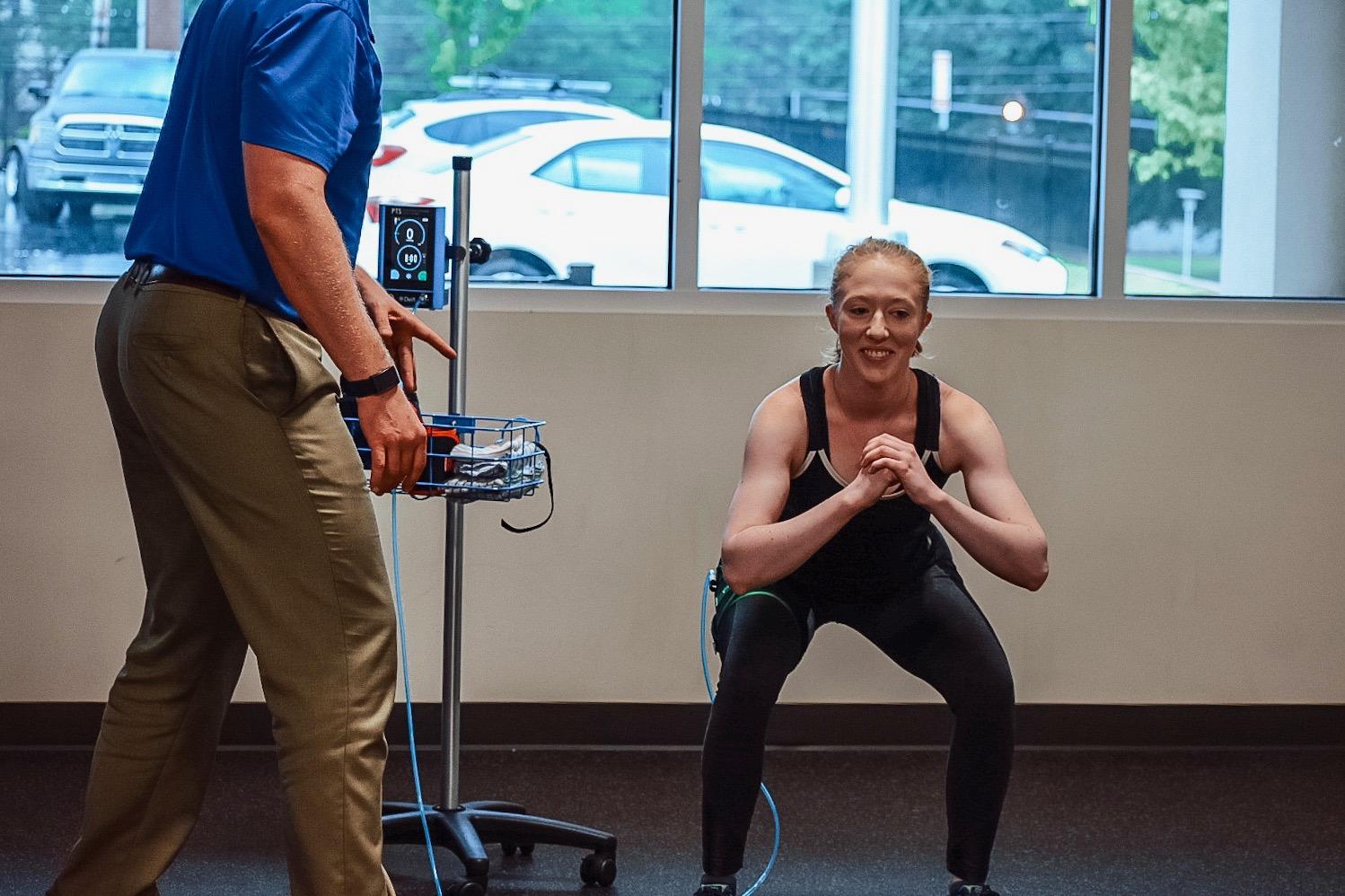Blood Flow Restriction
Blood flow restriction therapy (BFR) is highly individualized & has shown increased muscle hypertrophy, muscle activation, growth hormone response, strength, and endurance. BFR can be beneficial in post-surgery rehab to elite athletes preparing for an event or sport. We have physical therapists certified to use BFR in all clinic locations and use the only FDA approved cuff to limit some of the blood flow while you exercise. There are some circumstances where BFR is not appropriate. We will perform a thorough exam to determine who is an appropriate candidate.

Although some may view BFR as a tool only for elite athletes, it is also very practical in the rehabilitation field. BFR’s origins are in the military for the purpose of limb salvaging for returning troops.
Many people are unable to lift any significant weight after various types of surgery. This dramatically slows down the speed of potential recovery in people of all ages and physical abilities, leading to increased health care costs and physical/mental decline. BFR allows these people to benefit from the strength gains while lifting far lighter weights. In other words, it speeds up their recovery substantially!
BFR has also been shown to be an effective adjunct to training routines in elite athletes looking to increase strength and/or endurance.
The percentage of restricted blood flow is continuously monitored by the therapist and the unit, increasing the level of safety. By decreasing blood flow to the working muscles, lactic acid builds up in your body, generating a response.
This response leads to:
-
Hypertrophy
-
Protein synthesis
-
Growth hormone and other anabolic growth factors
-
Muscle activation
BFR allows you to train at only a fraction (20-30%) of your normal resistance and get the same benefits (muscle size and strength) without the same protein breakdown common with high load resistance training.
Recent articles have proved that BFR can be beneficial for aerobic endurance. When paired with cycling, it was shown to improve gains in aerobic conditioning.

During a cycling study in 2010, BFR:
-
Increased quadriceps muscle volume
-
Increased knee extension strength
-
Improved VO2Max (maximal oxygen uptake) by 6.4%
-
Increased exercise time to exhaustion
During a walking study in 2010, the BFR group showed an 11.6% improvement in their VO2Max. Another study with paratroopers in the military also showed significant improvements in VO2Max and quadriceps muscle strength.
In summary, BFR is proven to benefit both strength and endurance training. Whether you are looking to improve cardiovascular health or are an athlete looking to improve your VO2Max and cardiovascular endurance during events, BFR can benefit you.
One benefit noted in the strength and conditioning literature is that there tends to be less delayed onset muscle soreness (DOMs). This is due to the fact that you are training at only 20% of your 1RM leading to less protein breakdown. Professional athletes have started using this during in-season training routines to increase HgH levels without the traditional high load training that tends to decrease in-season.

In a world where time is so critical and insurance companies are paying for less and less, anything that can speed up the recovery process is well worth utilizing.
BFR has been proven to be a safe modality to utilize. The type of BFR unit and the practitioner’s knowledge are absolutely crucial in safely using BFR. We use the only FDA approved BFR unit on the market. There are many “cheaper” versions that do not have the accuracy, reliability, or safety of the unit we use. We strongly discourage the use of various knock-off brands for these reasons.
